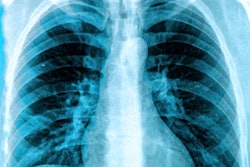
NEW YORK CITY - Will artificial intelligence (AI) replace radiologists over the next decade? No, but it will spark changes in PACS software that will enable radiologists to access the algorithms they want, Dr. Eliot Siegel told attendees on Monday at the New York Medical Imaging Informatics Symposium (NYMIIS).
"In 10 years, I think the biggest implication of AI is not how it replaces radiologists but that the PACS systems will be very different," said Siegel, a professor at the University of Maryland. "Right now if I buy a PACS system or if I pick an advanced visualization software or a modality software, I'm pretty much limited to that particular ecosystem of software. But what's going to happen is that we'll be able to consume our favorite AI applications inside our system."
Hurdles to radiology AI
 Dr. Eliot Siegel of the University of Maryland.
Dr. Eliot Siegel of the University of Maryland.The adoption of AI in radiology continues to face a number of challenges, he said in his talk on the hype, reality, and future applications for AI in medical imaging. While thousands of excellent papers have been written on exciting -- but narrow -- machine-learning applications for detection, diagnosis, and quantification tasks, it can be difficult, time-consuming, and expensive to annotate the thousands or even millions of imaging studies needed for machine-learning algorithms to derive meaningful patterns of information.
"And another challenge, even once you've annotated those images, is that the technology moves on," he said. "So if I've spent five or 10 years annotating 500,000 mammography images, all of a sudden I find out that mammographers are now using tomosynthesis. Do I start all over and start annotating again?"
Another challenge is the delivery of these algorithms to the radiologist's workstation, Siegel said. Despite all of the thousands of algorithms that have been presented in the literature or at imaging conferences, very few are available today at a typical PACS or advanced visualization workstation.
"We need ways to take the systems that we're using currently -- like our PACS and advanced visualization workstations -- and allow [the radiologist] to be able to consume a marketplace that lets me go to the equivalent of an app store," he said. "Whether that's the big modality vendors that are going to [provide] the app stores or if it's going to be other vendors, I'm not sure. But we need a way to deliver these."
Regulatory developments
Regulatory issues remain a major hurdle to the adoption of AI in radiology, but the U.S. Food and Drug Administration (FDA) has recently undertaken two encouraging initiatives: a software pilot precertification program that offers the potential for significantly faster approval and a de novo process that enables vendors to request that the approval process for their software be downgraded from class III to class II.
With the software precertification program, "the idea is for the FDA to get used to certain vendors -- big or small -- and look at their operational excellence, culture of quality, and commitment to monitoring real-world performance, etc., and once they know the vendor, actually making it fast and easy for that vendor who's using the same type of software to get approved," he said.
Meanwhile, software that has been granted de novo status and 510(k) clearance can be considered a predicate for similar devices that follow in the 510(k) process. In the past year, the FDA has granted de novo petitions for four imaging AI-related devices that have received 510(k) clearance:
- Quantitative Insights' QuantX Advanced, a breast imaging computer-aided diagnosis platform that uses AI technology
- Imagen Technologies' AI-based OsteoDetect software for detecting and diagnosing wrist fractures in adults
- Viz.ai's Viz CTP image-processing software for viewing and analyzing CT perfusion images
- IDx's IDx-DR, which is used to detect diabetic retinopathy in adults in the primary care setting
"The FDA has done a really good job overall in the last two or three years at creating streamlining processes that could make things faster," Siegel said. "Even so, they are incredibly inundated and still only a handful of [software applications] have been approved for AI."
Low-hanging fruit
Although using machine learning to make and quantify findings on radiology images is interesting and exciting, Siegel said that the most important applications in the next few years will target other applications, including the following:
- Image protocol prediction
- Hanging protocol optimization
- Speech recognition
- Summary of important electronic medical record data
- Case review triage
- Contrast enhancement quality
- Image report quality
- CT and MR image optimization (e.g., improved reconstruction)
- Risk assessment
- Population analysis
- Patient tracking
- Personalized medicine: lung nodule research; prostate, lung, colorectal, and ovarian cancer; genomics; and personalized medication and treatment planning
Predictions for AI
Radiologists should have no fear of being replaced for decades, but they will work collaboratively with AI programs, Siegel said.
In other predictions, Siegel said that the future of AI will accelerate the provision of "best-of-breed" AI algorithms to radiologists, nuclear medicine physicians, and clinicians. This will require an AI orchestrator/consolidator.
Siegel also expects to see boutique imaging AI applications from companies that focus, for example, on a specific area such as AI for multiple sclerosis.
"I wouldn't expect to see something like that from the big modality vendors, but a package that could do something like that and speed up diagnosis and quantitative comparison would be really, really cool," he said.
There will also be an increasing number of nonimage pixel-based applications, he said. Furthermore, convolutional neural networks (CNNs) will have a major impact on image acquisition, according to Siegel.




















